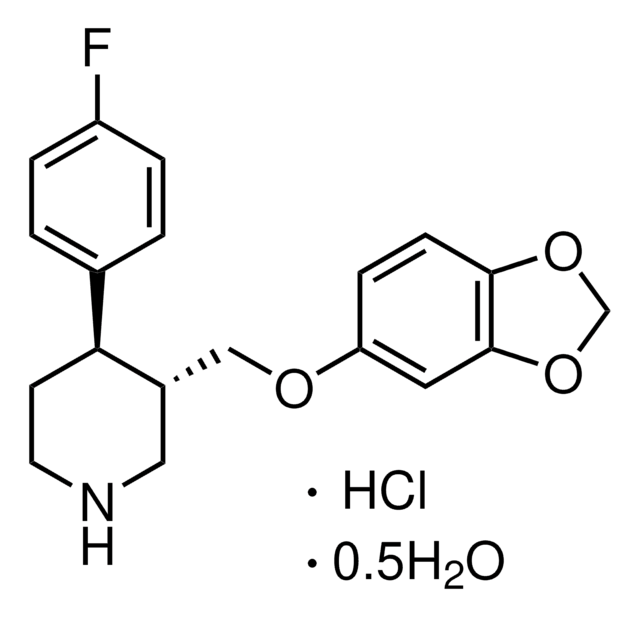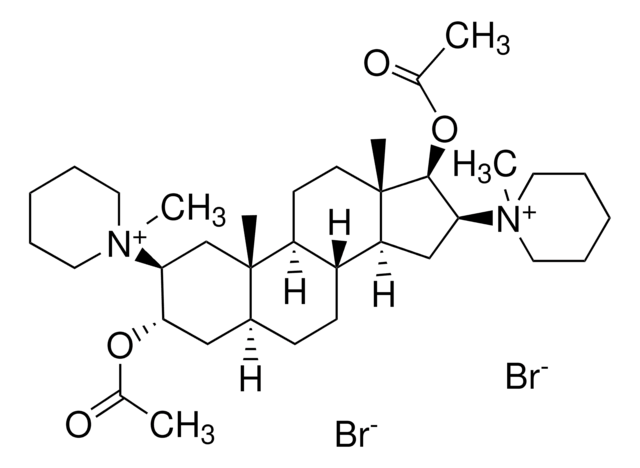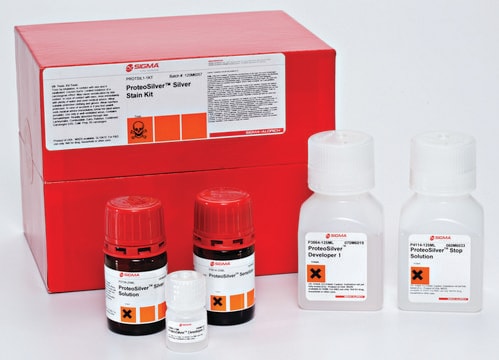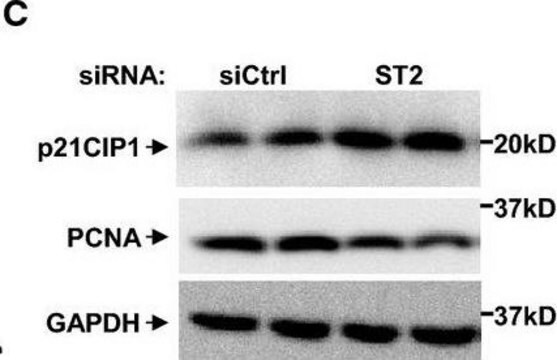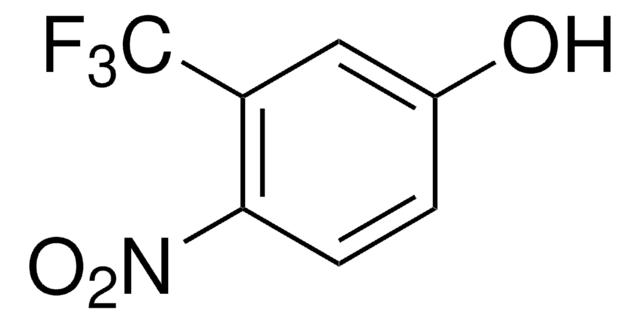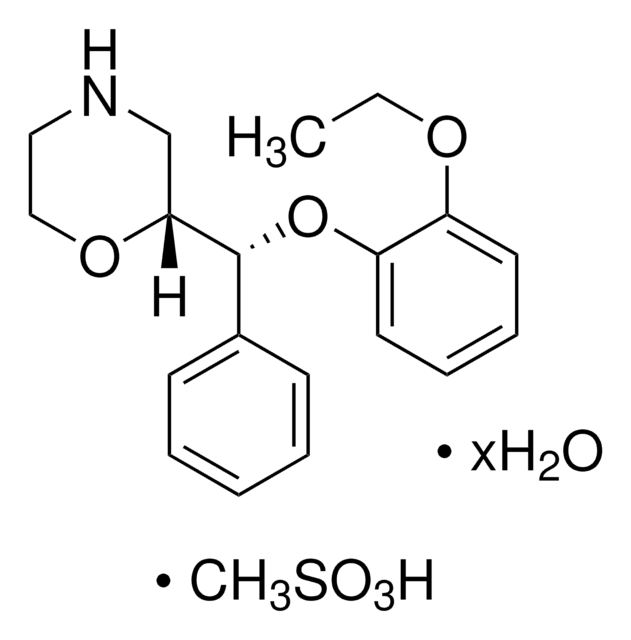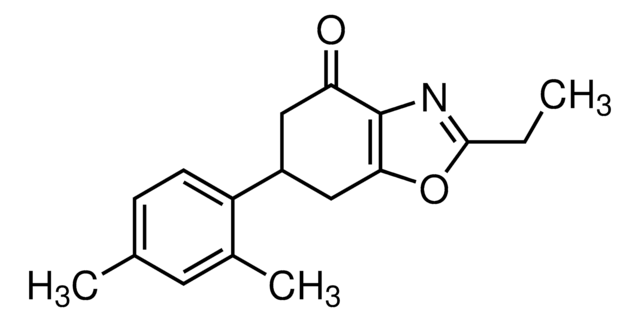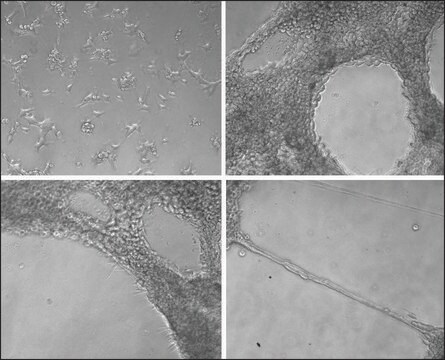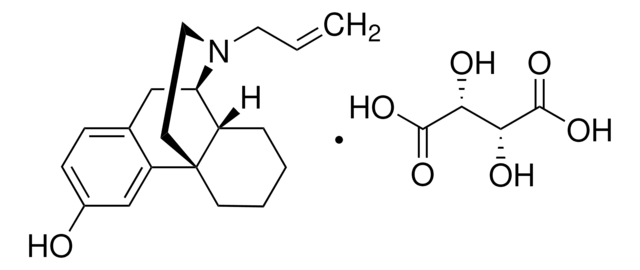P8996
Monoclonal Anti-PINCH-1 antibody produced in mouse
clone PINCH-C58, purified immunoglobulin, buffered aqueous solution
About This Item
Polecane produkty
pochodzenie biologiczne
mouse
białko sprzężone
unconjugated
forma przeciwciała
purified immunoglobulin
rodzaj przeciwciała
primary antibodies
klon
PINCH-C58, monoclonal
Formularz
buffered aqueous solution
masa cząsteczkowa
antigen ~37 kDa
reaktywność gatunkowa
hamster, bovine, mouse, monkey, canine, human, rat
metody
immunoprecipitation (IP): suitable
indirect ELISA: suitable
western blot: 1-2 μg/mL using total cell extract from 293T cells
izotyp
IgG1
numer dostępu UniProt
Warunki transportu
dry ice
temp. przechowywania
−20°C
docelowa modyfikacja potranslacyjna
unmodified
informacje o genach
human ... LIMS1(3987)
mouse ... Lims1(110829)
rat ... Gcc2(309798)
Opis ogólny
Immunogen
Zastosowanie
- teście immunoenzymatycznym (ELISA)
- immunoblottingu
- immunoprecypitacji
- koimmunoprecypitacja
Działania biochem./fizjol.
Postać fizyczna
Oświadczenie o zrzeczeniu się odpowiedzialności
Nie możesz znaleźć właściwego produktu?
Wypróbuj nasz Narzędzie selektora produktów.
Kod klasy składowania
10 - Combustible liquids
Klasa zagrożenia wodnego (WGK)
nwg
Temperatura zapłonu (°F)
Not applicable
Temperatura zapłonu (°C)
Not applicable
Wybierz jedną z najnowszych wersji:
Certyfikaty analizy (CoA)
Nie widzisz odpowiedniej wersji?
Jeśli potrzebujesz konkretnej wersji, możesz wyszukać konkretny certyfikat według numeru partii lub serii.
Masz już ten produkt?
Dokumenty związane z niedawno zakupionymi produktami zostały zamieszczone w Bibliotece dokumentów.
Nasz zespół naukowców ma doświadczenie we wszystkich obszarach badań, w tym w naukach przyrodniczych, materiałoznawstwie, syntezie chemicznej, chromatografii, analityce i wielu innych dziedzinach.
Skontaktuj się z zespołem ds. pomocy technicznej